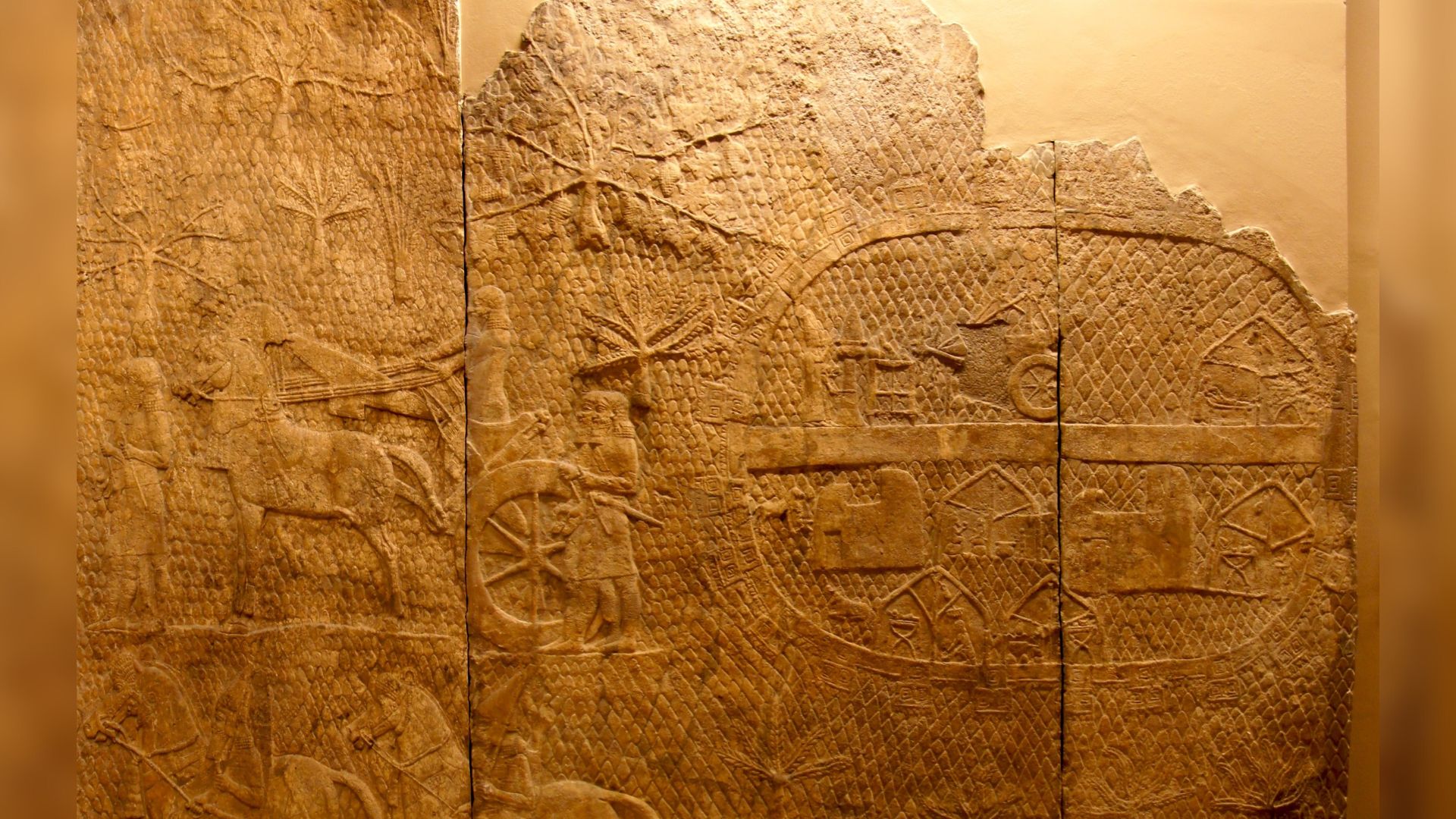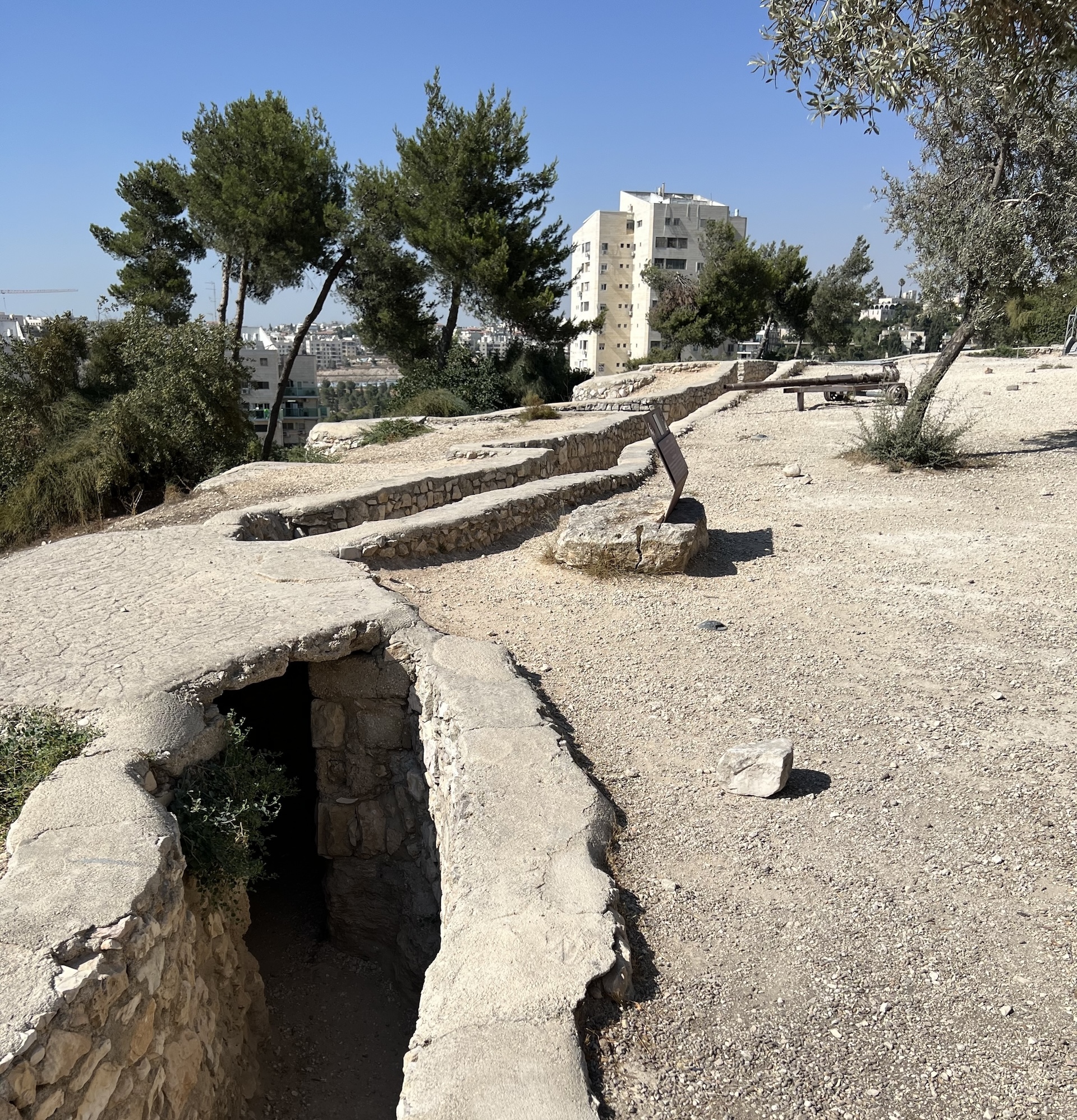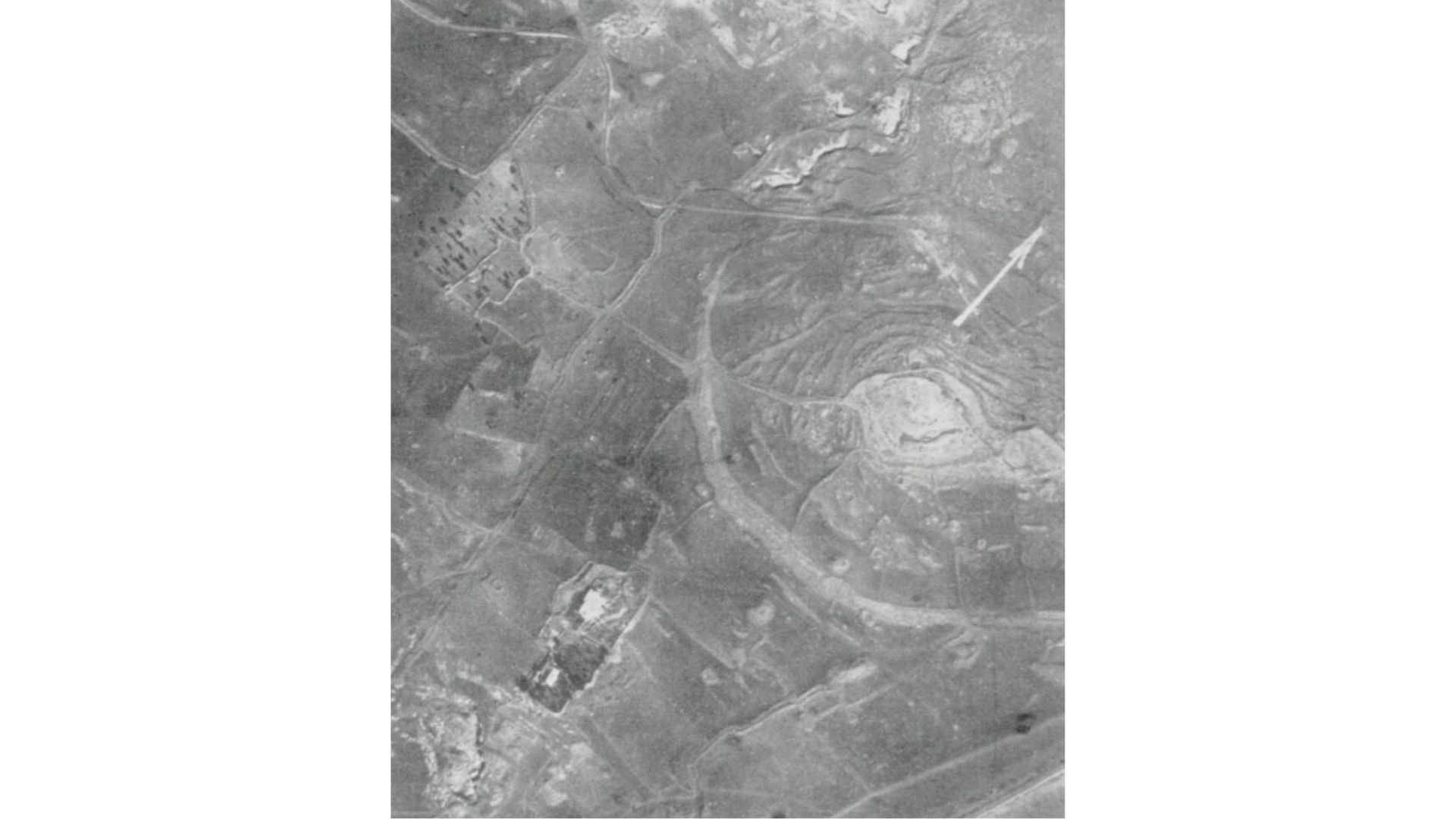Long-lost Assyrian military camp devastated by 'the angel of the Lord' finally found, scientist claims
Has a scholar located two Assyrian military camps mentioned in the Hebrew bible?

Military camps used by the Assyrian king Sennacherib, whose exploits of laying siege to Lachish and Jerusalem are detailed in the Hebrew Bible, have finally been identified, a scholar says.
At the time of the sieges, which both occurred around 701 B.C., the Assyrians controlled a rapidly growing empire that stretched from the Persian Gulf to the Mediterranean Sea.
The sieges at Lachish and Jerusalem are mentioned frequently in the Hebrew Bible and supposedly ended at Jerusalem when "the angel of the Lord went out and put to death a hundred and eighty-five thousand in the Assyrian camp" (2 Kings 19:35). But ancient Assyrian inscriptions tell a different story, claiming that Hezekiah, the king of Judah, paid a large amount of tribute to get the Assyrians to leave.
Lachish siege
At the British Museum in London, there is a relief depicting the siege of Lachish, and it shows the Assyrian camp. Stephen Compton, an independent scholar who specializes in Near Eastern Archaeology, compared this relief to photos from the early to mid-20th century which show Lachish. He identified a site north of Lachish with an oval shaped structure with walls that he thinks may have been the Assyrians' camp.
Compton noted that Assyrian camps tended to be oval. The Arabic name of the proposed camp site is "Khirbet al Mudawwara," and during the Middle Ages, the word "Mudawwara" could mean a place where a sultan placed a military camp. This suggests that people who lived at the site in later times knew that the ancient Assyrians had used it as a camp, Compton noted in an article published in the June issue of the journal Near Eastern Archaeology.

Additionally, an archaeological survey conducted in the early 20th century found the remains of pottery shards whose styles date to around the time that Sennacherib laid siege to Lachish, Compton noted. He told Live Science he has sent a copy of his paper to archaeologists who are working at the Lachish site and he hopes that future excavations will shed light on whether the Assyrian camp is located there.
Sign up for the Live Science daily newsletter now
Get the world’s most fascinating discoveries delivered straight to your inbox.
Jerusalem camp
In the case of the Jerusalem camp, Compton used old aerial photographs and 19th-century archaeological excavation records to survey the landscape. He noted that in 1881 to 1882, the Palestine Exploration Fund (PEF) found walls at a site called Jebel el Mudawwara, located north of the Temple Mount. The Palestine Exploration Fund is a non-profit organization that facilitates research in the region.
The 19th-century archaeologists thought it was a Roman camp, but the excavation records indicate that the camp is oval. "Roman [military camps] were rectangular, whereas the photos indicate that this was roughly oval, consistent with an Assyrian camp," Compton wrote. Additionally, the name "Mudawwara" — a name associated with military camps — is used by 19th-century sources to describe the site.
If this is the place where Sennacherib set up camp to lay siege to Jerusalem, it could also be Nob, a site that once held the Tabernacle, a portable sanctuary constructed by Moses, Compton said. The Hebrew Bible claims that the Tabernacle was set up at Nob and that Nob was where Sennacherib halted to attack Jerusalem.
The site's 20th-century history may make it more difficult to conduct new excavations there. In the 1930s, the British built an ammunition storage facility at the site, and it became known as "Ammunition Hill." In 1948, the Jordanian army positioned soldiers on the site and built a series of trenches and fortifications. And in 1967, there was a bloody battle between the Israelis and Jordanian troops that resulted in Israeli troops taking the hill. Today, a museum and memorial site are located there.

Scholars react
Scholars who were not involved with the research had mixed opinions of the findings. Some noted that the idea that the Khirbet al Mudawwara site at Lachish is an Assyrian camp is plausible. "The case of Lachish is the most interesting," Israel Finkelstein, a professor emeritus of archaeology at Tel Aviv University, told Live Science in an email. The "next thing to do is to check the suspected site in the field," Finkelstein said.
Eckart Frahm, a professor of Assyriology at Yale University, said that it's possible that Khirbet al Mudawwara was an Assyrian siege camp.
Others are doubtful, however. David Ussishkin, a professor emeritus of archaeology at Tel Aviv University who has conducted extensive work at Lachish, told Live Science he thinks the siege camp was to the southwest of Lachish.
Meanwhile, the idea of Jebel el Mudawwara as the siege camp for Jerusalem got a negative response. Frahm said Assyrian inscriptions suggest that while Sennacherib blockaded Jerusalem, he didn't try to take it by storming it or through the use of siege engines. Assyrian inscriptions say Sennacherib built "fortified structures" to blockade Jerusalem rather than to construct a single camp, Frahm said.
Frahm also disagreed with the meaning of the Arabic word "mudawwara," saying it doesn't necessarily refer to a place where a sultan would place their tent. "The basic meaning of Arabic 'mudawwara,' if I am not very much mistaken, is 'round place' — and in my view, the many different al-Mudawwaras discussed by the author all simply indicate the roundness of the structure the term describes," Frahm said.
The sources noted that further investigations will be needed. Mordechai Cogan, professor emeritus of biblical history at the Hebrew University of Jerusalem, told Live Science that the landscape where the sites are located may make them ideal for Assyrian military encampments but also said that new archaeological excavations are necessary.
Editor's note: This article was updated at 10:43 a.m. EDT on June 20 to correct Mordechai Cogan's title to professor emeritus of biblical history at the Hebrew University of Jerusalem.

Owen Jarus is a regular contributor to Live Science who writes about archaeology and humans' past. He has also written for The Independent (UK), The Canadian Press (CP) and The Associated Press (AP), among others. Owen has a bachelor of arts degree from the University of Toronto and a journalism degree from Ryerson University.










